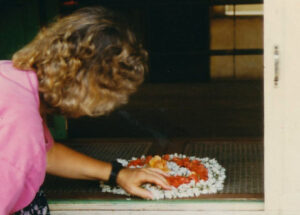 The morning after Sankara’s funeral, we slowly walked the dusty road to the Sankara Mutt (temple) and bought flower garlands from a vender on the corner. The modest cement area where we’d meditated with the sage, where he’d lived and blessed his devotees, and where they held his funeral ritual the day before was quiet and stripped, his meagre ceremonial belongings moved to the new building where they buried his body.
The morning after Sankara’s funeral, we slowly walked the dusty road to the Sankara Mutt (temple) and bought flower garlands from a vender on the corner. The modest cement area where we’d meditated with the sage, where he’d lived and blessed his devotees, and where they held his funeral ritual the day before was quiet and stripped, his meagre ceremonial belongings moved to the new building where they buried his body.
A few of Sri Sankara’s closest disciples sat near an empty palanquin (a small litter) where the sage had slept when on pilgrimage. Sita-Ma, an older women disciple, sat on a cement platform. She and the few other devotees were silent, somber, and grief-stricken.
I made a flower mandala in the palanquin as an offering of gratitude. When the sage was alive, the palanquin was behind the curtain, but the curtain was gone. The litter would soon be moved, too.
“This is the Death of all the Fathers” continued in my thoughts. Even thirty years later, it’s hard to give that symbolic, dream-like experience clear meaning, but it encouraged me to review my life with fathers and father-figures.
I’d been a daddy’s girl, a grandpa’s girl, and devoted to my older brother. Religion in my childhood was led by men other than the music which was my grandma’s specialty. There was no mention of Biblical women in Sunday School classes, except for a brief appearance of the Virgin Mary as a teenage girl veiled in blue at Christmas. After my father’s death when I was 14, my mother encouraged me to be a scholar and achiever instead of focusing on spirituality or the heart.
At Cornell in the 1960s, all my professors were men—every last one. In 1966, I fell in love with Vic and my first thought when I met him? “He’s just like my father.” Fortunately, we were both interested in Jungian Psychology and working through our parental complexes.
In 1967, my first spiritual teacher Anthony Damiani was a father of six sons and many students, the most vocal predominantly male. Anthony and his oldest son ran a bookstore filled with philosophic books, nearly all written by men. We studied Plotinus and Paul Brunton, Plato and Aurobindo, C.G. Jung and Santayana, Ramana Maharshi and the Dalai Lama, and many more–all teachers I still honor who harmonized with my girlhood prayers to God the Father.
Pondering the symbolic meaning of the “death” of the fathers opened me to an inner birth of the feminine or Divine Mother. I was and am still involved with a group of women studying Goddess mythology and pre-Christian traditions. I made it a priority to get to Canada to workshops with Marion Woodman, a Jungian Therapist who was devoted to the Biblical Sophia and the goal of balancing masculine dominance in western culture with an equally strong feminine focus. Others in my women’s group also attended workshops with Marion or studied her books.
Marion helped me find the Sacred Feminine in Nature, mythology, poetry, art, and body. I’ve learned that Sacred Feminine goes beyond revered teachers and texts. It’s also within me and in life around me. Nature has become my Divine Mother and the forest is my Temple.
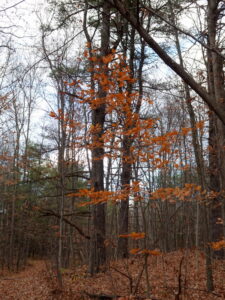 “Conscious femininity is aware
“Conscious femininity is aware
Of the energy in rock, bird, tree, sunset,
Aware of living in the world soul.
The body is attuned, concentrated alive,
Open receptive, alert,
Aware in the marrow
Of the harmony of the universe.”
~ Marion Woodman, Conscious Femininity
***
For the first six posts in this series, see Out of Control: Pilgrimage to India, 1, Out of Control: Journey to India, Part 2, Journey to India, Part 3, The Silent Blessing (Journey to India, Part 4) A Sacred Grief Ritual, Journey to India, Part 5), and Grieving for the Guru, Journey to India, Part 6. I’m ready to move on, although I didn’t include stories about the temple elephants. That may come later. I’d love to read your reflections about this piece or others in this series.
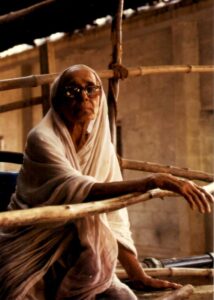
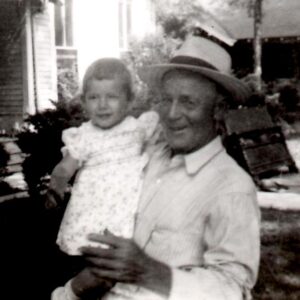
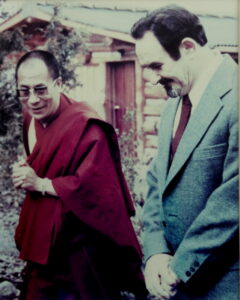

My deepest gratitude to you dear Elaine for sharing your wise words and wonderful photos of the life-changing journeys you made with your beloved Vic to Mother India. It’s been a real pleasure, if that’s the right word, to read about the monumental death of Sankara in this rich series of yours and how in particular those reverberating words, “This is the death of all the fathers” continued on a loop around your head and heart for years. Thus slowly, your soul seems to have undergone a metamorphosis as the Divine Feminine and Divine Masculine danced, merged into balance and harmony with each other.
Oh, how I resonate with this particular spiritual journeying deeply myself and is the very reason why I’m writing my new book, ‘Soror Mystica: Balancing the Divine Feminine and Divine Masculine’, as I strive to find balance and harmony between these opposites, above and below. I think although it’s a universal theme it presents uniquely in each of our lives. At the moment I’m having what appears to be a love affair with Marion myself as I do with all my important teachers … for without love there is no lesson. I will look forward to the day you write about the temple elephants. Love and light, Deborah.
Thank you for reading this series, Deborah. I needed to write down what I could of the experience, but “the words” feel much less than the mystical awakening. I feel more comfortable writing about butterflies. 😉 As I’ve written and posted this, I’ve been tested and failed to keep my cool with computer problems. We’re still working on it, but I think the problem is narrowed down to a manageable issue and it can wait because I don’t want to ask for computer help on a holiday weekend. Vic used to say, “the computer doesn’t respond to your feelings, Elaine.” It was so true and also made me laugh.
I agree our balancing of the opposites is unique for each of us. For me, Marion was the ultimate teacher of love and the Feminine–and men loved her as much as women. I was at a workshop co-led byMarion and Carol Gilligan, a writer and professor. People who attended the workshop were irritable and sometimes hostile because they wanted Marion’s experiential and poetic style, not Carol’s more academic lectures. I saw Marion keep her poise under fire, not take the anger personally,, and instead add a few sessions to the workshop during “rest” hours, so she offered an unscheduled dream workshop and a circle dance to end the workshop. It was a wonderful example of how to bring balance and in this case a woman, Carol Gilligan, was holding the masculine side. Carol didn’t come to the dream work or the dancing. Marion carried the feminine with ease. Sending love in the dark days, Elaine
Words often fail and feel inadequate when trying to describe a mystical awakening such as you experienced in India at that time. Oh no, I hope your computer man returns soon and sorts things out. Love Vic’s retort about computers not responding to feelings. As a feeling type myself, I did laugh at that one!
Oh, I wish Marion was still with us (she’s with us in spirit, of that I’m sure!) as I would love to write to her about my Animus Diet adventures and gift her my little book. I can imagine her laughing out loud at some of my escapades! Hmm, at that workshop it sounds like the women know what women wanted and they wanted Marion.
Marion had such powerful and transformative experiences in India. It’s another way we connected. I wish you could show her your book, too. She’d request an autographed copy–or that’s what she requested from me and from Vic. I loved giving her a dietary consultation to help with her illness and was honored to be asked. As of this moment, the computer is running smoothly, but it’s best not to count on anything, so I’ll respond to comments and go back to the work of the Monarch Crone. May all be well with you and Lin.
I wonder who and how I may have been if I had not been exposed to women scholars, even if this was later on in my life. It’s absolutely true that the influential psychologists, thinkers were mostly male in my orbit. One or two woman – saints, poets. Sontag, Steinem. St. Theresa of Avignon, Joan Baez. Women were sidelined as was all feminine energy. But, not forever! What a surge of energy, a flowering. Women Jungian analysts including Woodman, came at the right time. Luke, Singer, Schierse -Leonard, (?sp) Perera are a few from the top of my head.
Thank you for this powerful series Elaine – your ongoing refrain reminds me of God is dead! My understanding of that inter alia is that a fixation of everything being ‘up there’ needs to be cut down to allow what is under to emerge. Something like that – I’ve expressed it rather clumsily.
Happy Thanksgiving!
The first women teachers I read were students of Jung. I presented ideas about the animus in Vic’s Jung class in the early 1970s. So I studied Emma Jung, Marie Louise von Franz, Toni Wolff, Linda Fierz-David, and more–but I didn’t meet any of these women or work with them or feel they were my personal teachers. I also loved Joan Baez, Joni Mitchell, and Judy Collins plus a few more women artists of that time. I’m grateful for the recent flowering of women teachers including Clarissa Pinkola-Estes, Toko-pa Turner, and Robin Kimmerer. And us! The feminine voice speaks!!
I think I understand your second paragraph. For me, God is not dead–just this focus on God being a male and up there, transcendent only and not immanent in our lives. I try to create a Goddess/God balance for myself, not always successfully. It was helpful to read what happened in Mesopotamia in the Iron Age when there was only a God and no balancing Goddess or feminine energy. Anne Baring (another great woman writer) has an excellent section about the Iron Age, Tiamat and Marduk, and the killing of the feminine divinity in ‘The Myth of the Goddess.’
Blessings to you and your family. It doesn’t seem any of us will get much political rest, but I hope we avoided the worst situation in this country–for now.
Dear Elaine,
These wonderful reflections on your time in India have brought back memories of my own time there with Dotty and others from the Goldenrod community—two trips in the early 90s. I vividly remember Sita-Ma sitting off to the side in the deepest, devotional contemplation (if that’s what is was—those are my associations). I was dimly aware that the Goddess Kamackshi was revered at the Mutt, and now, on reflection, I believe Sita-Ma embodied her.
My journey included a couple of years studying with Robert Bly and others in books and workshops; in the mid eighties he took the role of the man who drew other men to the fact of toxic masculinity and attempted to point the way to a harmonious relationship between the masculine and feminine forces. It was an important education for me, though, to this day, I still carry patriarchal forces, though muted. Our current cultural moment embodies the most radical extreme of toxic masculinity everywhere you look—and the profound weakness at its core. Maybe it’s wishful thinking, but that weakness seems to me like a deadly cancer in the body of that masculinity, forcing either its dissolution or transformation. Now is the time.
One final note: at the Goldenrod Center where we prayed, studied, and meditated together, one of the most frequently used pre-meditation mantras that Anthony Damiani taught as was the Gayatri, a prayer to the Divine Sun, the Heart of the Sun, the “I” in the Sun that is the true “I” in us. It’s only in the last few years that I’ve learned that that beautiful prayer evokes the Feminine, the Divine Mother, to support our quest for the God Within.
Blessings upon you for these wonderful writings!
Your old friend and admirer,
FW
Sita-Ma was always there. Yes, I can see Sita-Ma as Kamackshi. The only women I saw near the sage were Sita-Ma in a ritual I didn’t understand and a famous Indian singer whose name I don’t recall. Otherwise only men behind the fences.
I learned so much from Robert Bly and his books are still on my shelf. I love his poetry and loved the ‘The Maiden Tsar’ written with Marion. They had different perspectives but could hear each other. I agree with your second paragraph (the last few days have stood out as more young disturbed men with guns kill innocent people). May there be transformation, but it’s slow in coming. I don’t know much about Gayatri (Mother Gayatri), but you inspire me to learn more–after I bake cornbread and make a salad for the Thanksgiving gathering at my son Anthony’s home. Despite music and prayers that exalted the feminine, our meditation center was dominated by a masculine focus–and I learned so much and am so grateful for what I learned and the community and teachers, but Sankara’s death brought a new consciousness and need for me. Thanks for commenting. Give my love to Dotty, Josh, and to yourself.
I read with interest your post and the comments that point to feminine influences. Actually, the Bible highlights many, but I believe the male hierarchy of old may have downplayed their impact in the world. These days, published books showcase the legendary women of the Bible: Deborah, the Judge; royal women like Vashti, Esther, and Abigail, women who relied on God for wisdom: Hannah, Elizabeth, and Salome, and New Testament women whose lives affected others: Mary and Martha of Bethany, Joanna, and Mary Magdalene.
I’m sorry that growing up there was “no mention of Biblical women in your Sunday School classes, except for a brief appearance of the Virgin Mary.” True, all of the pastors in the Mennonite Church I remember were men, but many women have been ordained in recent years. We now attend a church with multiple pastors, one of which is a woman who has preached often.
My Grandmother, Aunt Ruthie, and Mother were strong influences in my childhood and beyond, so much so that one reader commented about the feminist values she thought my book promoted–ha! Also, you continue to be a voice here: Indeed, the feminine voice does speak!
Happy Thanksgiving as you and I count our blessings around a bountiful table.
Marian, I didn’t study the Bible in my loosely Presbyterian upbringing (I rarely went to church after 8th grade) and no one taught me those stories as a child. I know they’re there, and I’ve learned some of them as an adult. I had to find my own sacred feminine and that’s another path. It’s been interesting to dig into Mesopotamian mythology, the roots of Christianity, Judaism, and Islam, and realize how the feminine was stripped of power in the Iron Age when weapons became more important than agriculture.
I was guided by mostly male teachers and writers, although that’s changed in the last 30 years. More women are in the pulpit, too. You had powerful women in your family and religious community. I had my powerful grandma and her hymns and strength. Yes, I hope the feminine voice, including yours, continues to speak here and everywhere. Blessed Thanksgiving to you and your family. My local son is hosting dinner, so I just have a few small things to bring and not a day of cooking, but I’d better start that cornbread. Blessings to you.
First, that is fascinating and the same logic that you have the music from your grandma. That is the Anima! And (I fell in love with Vic, and my first thought when I met him? “He’s just like my father.”) Dr Freud might say; Oh!
In any case, I would say; thanks to Marion Woodman for awakening the world to an important issue, the Anima. However, thank you for this particular and brave trip to the so-called “Unknown” of western culture. As I am from such a corner, nevertheless, I have much enjoyment with your exciting journey. Conscious femininity is all I have to research.
My paternal Grandma, the pianist and contralto, also had a strong masculine side. I loved being with her on the farm and she always played the piano after a family meal so we could sing. I had some deep work to do with my projections on Vic. Marion Woodman was a big help. Dr. Freud would have noticed and also Dr. Jung. I’m fortunate Vic and I began doing psychological work together when we were married and it continued for 42 years. We were interested in each other’s dreams and inner responses to every experience. We worked well together as parents, too. We were interested in each other’s good sides, but also the shadow responses. And traveling with Vic was excellent for more cautious me. He didn’t get rattled by changes and challenges natural to travel anywhere. Vic was also comfortable with the feminine (anima) and LOVED Marion Woodman and synchronicity. India was an intense transformation for both of us.
Ps I’m glad Marian said about the women in the Bible –
I don’t know what you’re referring to, Susan, but Marian was raised in a strongly Christian family and I wasn’t. She was especially devoted to Sophia or Divine Wisdom.
As I have written before, Elaine, I feel deeply fortunate to have discovered your blog (as well as your book), and especially grateful for the exchanges between you and your dear friend Deborah. As a poet, she finds the words to express what I am feeling: “It’s been a real pleasure, if that’s the right word, to read about the monumental death of Sankara in this rich series of yours and how in particular those reverberating words, “This is the death of all the fathers” continued on a loop around your head and heart for years. Thus slowly, your soul seems to have undergone a metamorphosis as the Divine Feminine and Divine Masculine danced, merged into balance and harmony with each other.”
Marion continues to be one of my greatest teachers in my ongoing journey from head to heart. And thanks for making me laugh with Vic’s reminder that “the computer doesn’t respond to your feelings, Elaine.”
Sending love and light during this dark time of year, Anne
Yes, there I was in the middle of the dance of Siva and Sakti. The impulse to spend more time with Marion Woodman was essential and it’s interesting that she had a powerful mystical experience in India that was also impossible to understand rationally. I’m glad Vic was there when I had that experience because he and I spent lots of time unpacking it–not that we ever exhausted the meaning or made it feel “rational.” Maybe someday.
It’s dark and gloomy here, but not as cold as it sometimes is in late November. The sun emerged from the clouds and the light is beautiful. Somehow, day by day, we’ll get through the dark time and somehow my computer issues (still a mystery for my poor web host as he works to sort out the frequent crashes) will be sorted out, too. Everything changes and the dance goes on! Love and light to you.
I have listened over and over to Marion (on CD) describe her spiritual experience of an Indian woman being sent to save her life, when she was so sick in India, by sitting next to her on a couch in the hotel lobby several days in a row. I love that story and how she tells it.
Maybe it’s never meant to feel “rational,” even though we never stop trying.
We got six inches of snow last night and the world is, once again, transformed. Yes, everything changes and the dance goes on!
It’s a wonderful story. I’ve heard her speak of it in person, but I rarely listen to podcasts or CDs because of the stress of hearing. I’ve read that story many times and it’s always thrilling. Magic happens in India–and it’s also chaotic. I felt I was in a dream world much of the seven+ weeks we spent in India. I could never do it now, but that was 30 years ago.
Snow makes everything bright and beautiful. Our run of unusually warm weather just ended and the winds are wild. The skiiers are restless.